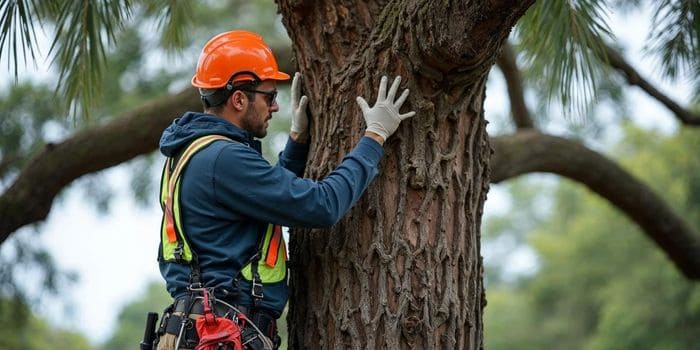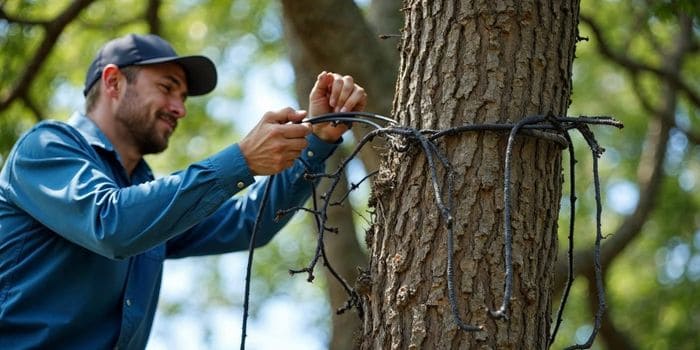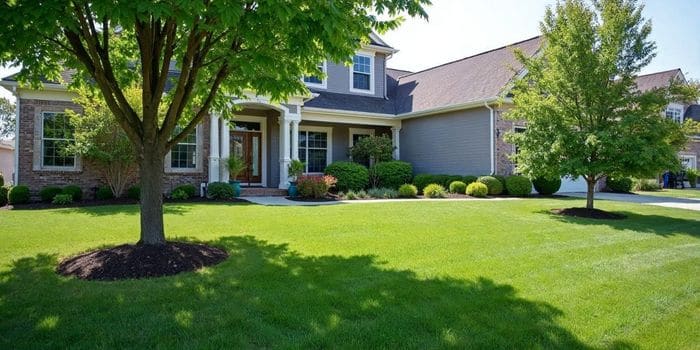Get Ready for the Storm: Essential Hurricane Tree Preparation Tips!
Hello, Storm Warriors! 🌪️ With hurricane season on the horizon, it’s time to prepare and ensure your trees are ready for the challenge ahead. Whether you’re a homeowner or managing a property, storm-proofing your trees is the key to peace of mind. Don’t let those strong winds catch you off guard; we’ve got the ultimate guide to tree care for hurricanes that will safeguard your landscape. From essential hurricane tree preparation tactics to expert advice on selecting storm-resistant trees, we’ve covered all the hurricane season tips you need! Let’s dive in and make sure your trees face the storm with confidence! 🎉 For more comprehensive hurricane preparedness information, check out this ultimate guide for homeowners.
Understanding Hurricane Tree Preparation
Before we delve into specific techniques, let’s explore why hurricane tree preparation is vital and how to choose storm-resistant trees for your property.
Importance of Tree Care for Hurricanes
Hurricane tree preparation goes beyond protecting your trees; it’s about securing your entire property. Proper tree care can significantly minimize damage risk during severe storms.
Well-maintained trees are better equipped to withstand high winds and heavy rain. They’re less likely to uproot or shed large branches, which can cause severe damage to buildings, vehicles, and power lines.
Furthermore, healthy trees are crucial for stormwater management. Their root systems absorb excess water, reducing the risk of flooding and erosion. As FEMA highlights, proper landscaping is a key element in mitigating hurricane damage.
Investing in tree care before hurricane season can save you considerable time, money, and stress in the long run. It’s an essential component of overall property maintenance in hurricane-prone areas.
Safe Trees for Storms: Choosing Wisely
In hurricane-resistant landscaping, not all trees are created equal. Some species naturally resist high winds and heavy rain, making them better choices for storm-prone regions.
Native species often top the list of safe trees for storms. They have evolved to endure local weather conditions and typically possess stronger root systems. Examples include live oak, bald cypress, and southern magnolia in coastal areas.
Characteristics of storm-resistant trees:
-
Deep, extensive root systems
-
Strong, flexible wood
-
Open canopies that allow wind to pass through
Avoid trees with shallow roots, brittle wood, or dense canopies, as they are more likely to topple or lose large branches during hurricanes.
Remember, even the most storm-resistant trees need proper care to remain healthy and strong. Regular maintenance is crucial for ensuring your trees can weather the storm.
Effective Storm-Proofing Techniques
Understanding the significance of hurricane tree preparation, let’s explore effective techniques to stormproof your trees.
Pruning and Tree Maintenance Before Hurricanes
Proper pruning is essential for preparing hurricane-resistant trees. It helps develop a strong, wind-resistant structure that can withstand storm conditions.
-
Remove dead, diseased, or damaged branches: These are the most likely to break off during high winds, potentially causing damage or injury.
-
Thin the canopy: This allows wind to pass through more easily, reducing the risk of uprooting or branch failure. However, be careful not to over-prune, as this can weaken the tree.
-
Raise the crown: Remove lower branches to increase clearance from the ground. This reduces the risk of these branches causing damage during high winds.
Timing is essential. As the experts at KAP Tree Service advise, major pruning should be completed well before hurricane season to allow the tree time to heal.
Inspecting and Reinforcing Tree Structures
Regular inspections are vital for identifying potential weaknesses before they escalate into significant problems during a storm. Look for signs of decay, pest infestation, or structural issues.
Pay special attention to:
-
The trunk: Check for cracks, cavities, or signs of decay
-
Branch unions: Ensure they’re strong and free from defects
-
Root area: Look for signs of root damage or soil heaving
For trees with structural weaknesses, consider reinforcement techniques. Cabling and bracing can provide additional support to weak branches or multiple trunks.
However, these techniques require specialized knowledge and equipment. Consult with a certified arborist for proper installation and maintenance of tree support systems.
Proactive Hurricane Season Tips
Being proactive is crucial for effective hurricane tree preparation. Here are steps you can take to ensure your trees are ready for storm season.
Scheduling Professional Inspections
While regular self-inspections are crucial, they cannot replace the trained eye of a professional arborist. They can identify potential issues that may escape the untrained observer.
Professional inspections should ideally be scheduled:
-
Annually for all trees
-
After severe weather events
-
When you notice any changes or potential problems
During these inspections, arborists can:
-
Assess overall tree health
-
Identify structural weaknesses
-
Recommend appropriate care and maintenance
Early problem detection can save you from costly damages. As FEMA recommends, regular maintenance is key to hurricane preparedness.
Preparing an Emergency Tree Care Plan
An emergency tree care plan is your guide for handling tree-related issues during and after a hurricane. It ensures a swift and efficient response, minimizing potential damage.
Key elements of an emergency tree care plan include:
-
Contact information for professional tree services
-
A list of priority trees that may need immediate attention
-
Safety protocols for assessing tree damage after a storm
Include steps for documenting any tree damage for insurance purposes. Take before-and-after photos of your trees each season.
Regularly review and update your plan. This ensures its relevance and practicality as your landscape and local conditions evolve over time.


